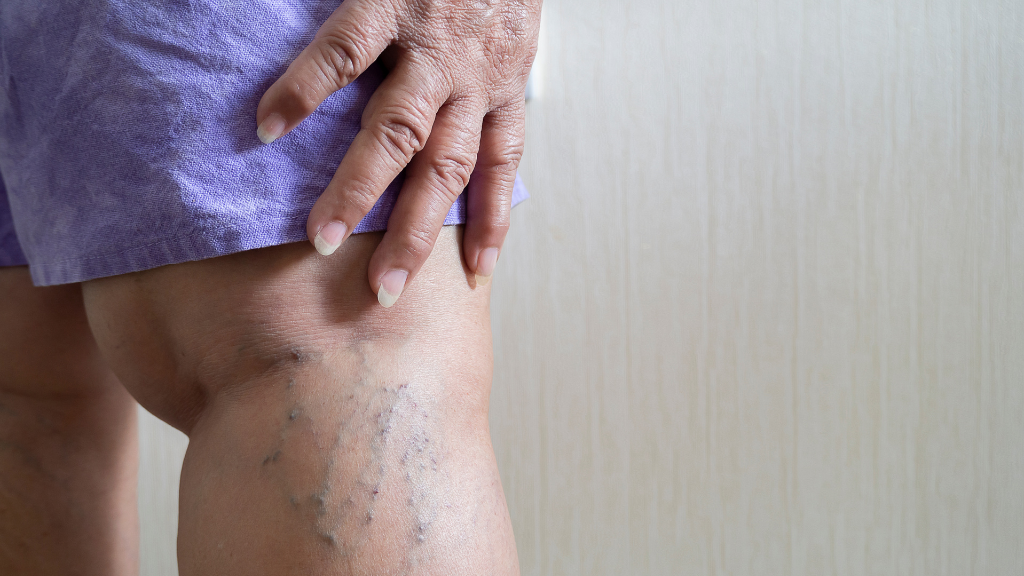This is a 7-minute read.
A lipedema diagnosis shakes up someone’s life and leaves them wondering how to cope with the impact. There is currently no cure for lipedema, so effective symptom management is essential.
Recent studies indicate that certain diets and inflammation management strategies may have positive effects on lipedema.
This article explores the connection between diet and inflammation, including how to establish an eating plan to reduce symptoms and maintain a healthy lifestyle with lipedema.
There Is No One-Size-Fits-All Lipedema Diet Plan
Dr. Emily Iker, one of the foremost authorities on lymphatic disorders, recommends a conservative and compassionate approach. This means taking a holistic view that values the person’s overall health status and personal wishes when managing lipedema.
To put it another way, a lipedema diet is not a one-size-fits-all approach. Each person’s eating plan and overall symptom management strategy should be custom-designed for them.
For example, patients who have body inflammation are often told to avoid salt, sugar, and/or dairy products. If they have lipedema, they might receive a recommendation for the RAD diet, or rare adipose disorders diet, which involves low consumption of pasteurized dairy, animal protein, fats, simple sugars, carbohydrates, and salt. The RAD diet increases the consumption of organic vegetables, fruits, whole grains, and healthy proteins.
However, it depends on the patient’s specific health situation. Someone with hypotension (low blood pressure) could put themselves at risk by limiting salt intake. A patient might also have another type of pre-existing condition that could be aggravated by a sudden and drastic change in diet. Always work with a qualified medical practitioner to develop an individual diet plan.
Keep in mind that lipedema may not respond to fad dieting, medically supervised calorie restriction, or bariatric surgery. Studies show that while women with obesity can lose obesity-related fat through bariatric surgery, lipedema fat is much more resistant to surgery and will likely remain after a bariatric procedure.
Diet, Inflammation, and Lipedema-Related Conditions
Dr. Karen Herbst studies how inflammatory diseases contribute to the development and progression of lipedema tissue and lipedema’s relationship to other conditions. New research indicates that depression may increase markers of inflammation in the body, including C-reactive protein levels and stress-related molecular pathways.
Inflammation also has known connections to food intake, environmental settings and contaminants, and conditions like inflammatory vein disease, non-lipedema obesity, prediabetes, sleep apnea, mast cell activation disease, and many others. There are many potentially interlinked conditions.
Dr. Herbst describes lipedema-related inflammation as “the fire within.” Someone who has constant inflammation may struggle to find relief, feeling that they can never quench the fire. This is why an anti-inflammatory diet has the potential for what Dr. Herbst calls “cooling the fire within.”
Anti-Inflammatory Lipedema Diet
What is an anti-inflammatory diet for lipedema? Broadly speaking, it involves eating foods such as the following:
- a rainbow of vegetables and fruits
- whole grains
- lean proteins
- beans
- fermented foods
- herbs and spices
These foods are packed with nutrition and anti-inflammatory substances.
On the flip side, avoid foods that tend to aggravate inflammation, such as these:
- added sugars
- refined grains
- chemically modified fats
- high-salt foods
- fatty proteins
- dairy products other than kefir or yogurt
Keto Diet Supports Lipedema Management
Scientific evidence also supports a ketogenic diet for lipedema. Ketogenic eating encourages the body to rely on protein and fats rather than carbohydrates for energy, which avoids the inflammation state of lipedema by controlling glycemic peaks.
A 2021 study provides a general plan for managing lipedema with a keto diet. It involves limiting carbohydrate intake to less than 25 grams per day (though this can vary), maintaining an even ratio of proteins to fats, having a high intake of vegetables, and minimizing sugar intake. This keto eating plan also involves drinking plenty of water, which aids digestion and other processes within the body.
Mindful Eating and Mindful Living
When exploring a new eating plan for lipedema, always keep in mind that it’s not all about food. The mind-body connection is a crucial part of symptom management. Studies have found that joint pain, tissue pain, stiffness, heaviness, and swelling are all related to how people rate their quality of life.
Living with lipedema is about more than what food you eat, how you look in photographs, or even how a doctor rates your condition. As Dr. Herbst writes in one of her articles about lipedema’s mind-body connection:
Too often, clinicians observe patients physically or through photographs and do them a disservice by focusing exclusively on the body. We need to think more about the mind-body connection because the mind and body of a person with lipedema are intimately intertwined.
This means, in addition to designing your personal lipedema diet, consider the impact of your mental outlook, physical status, and overall well-being. Consider adding breathwork and mindfulness exercises that support total body health.
More Information About Lipedema Diet and Inflammation
As you can see, new research is expanding our knowledge about living with lipedema. Developing a lipedema management plan is challenging, but there are many options available for lipedema support.
Patients can manage lipedema-related inflammation and other symptoms with innovative therapy options from Lympha Press. We’re dedicated to providing lipedema education and a full line of equipment to minimize lipedema symptoms and focus on living a full and active life.








